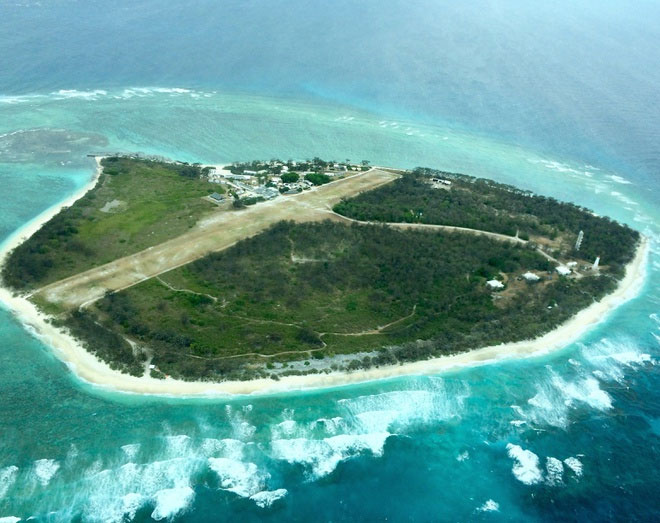According to two turtle conservation experts, the survival rate of green turtles after hatching is 1 / 1,000, of which albinos are almost unable to survive to adulthood.
The daily job of Jessica Buckman and Jin Buck is to monitor and conserve green turtles and land turtles on Lady Ellitot and Lady Musgrave Islands, according to the Guardian. They are also researchers working in the field of ecosystem management on Lady Elliot Island, on the Great Barrier Reef, northeastern Australia.
Jessica said she used to find stray young, but the little pink creature she found on March 8 was very different – a newly hatched albino baby who was having a little trouble finding his way to the nest .
“I dug sand and found it in the middle of the hole. I was very surprised, it was special to see this scene, ”said Jessica.
His colleague Jim Buck, who has followed turtles on the reef for more than 30 years, estimates that one in 100,000 eggs is born with an albino.
During his time at this post he had only seen a few and, like Jessica, was surprised to find an albino baby turtle.
When they arrived, he said, the nest had only two left, one of which was dead and still stuck in its eggshell.
“It’s hard to know if there are still more left because we weren’t there when they hatched,” Jim said.

Albinism is a genetic disease characterized by the loss of all or part of the skin pigmentation resulting in a white or pink skin condition.
In the animal kingdom, this means a very short lifespan because albino individuals are unable to camouflage themselves to hide from predators.
During his years studying turtles, Jim said he had never seen or even heard of an adult albino turtle.
Regarding the condition of the cubs they found, Jessica added that the animal was able to crawl out of the nest and reach the edge of the water about 10 to 15 meters away, with the help of a few specialists.
“They have to find their own way in the water to fit into a part of the world and that’s how they find their place on the map of life,” she said.
However, she did not expect to see the animal again. “Overall, the average survival rate of green turtles reaching adulthood is 1 in 1,000, and albinos are even less likely than that,” she said.


